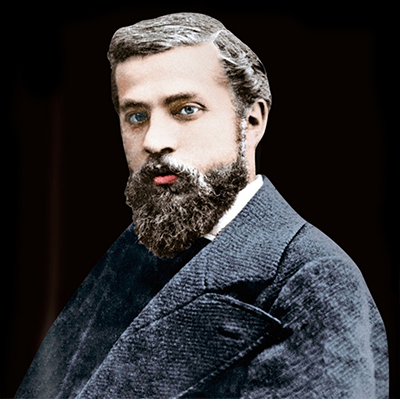Antoni Gaudí was born in 1852, but the exact location remains a mystery, as there are no supporting documents to verify his birthplace. The evidence slightly points towards Reus, but Gaudi himself claimed to be from Riudoms.
Thankfully we know a lot more about his later life. His early years as an architect were greatly influenced by his love of Mediterranean heritage and his love of art, and this showed proudly in his works. He was required to do compulsory military service in 1875, but his frequent poor health meant he spent most of the time on sick leave, thereby facilitating him to continue his studies. To finance his studies, he worked as a draughtsman for many outstanding Barcelona architects over this period. He was not a remarkable student and enjoyed average grades, but while studying architecture, he also studied history, philosophy, and aesthetics. These studies, coupled with his fascination with Persian, Chinese, and Japanese art would shape his thinking in the years to come.
His first major project was designing the lampposts at the Plaça Reial in Barcelona. While he started to gain more notice with his design of the Cooperativa Obrera Mataronense building, it wasn't until his work with the Casa Vicens that he started to become a more sought-after architect. This led to work on a display cabinet with the glove manufacturer Esteban Comella, and this impressed Eusebi Güell, who would go on to sponsor Gaudi for some of his best work. The Cooperativa Obrera Mataronense project consisted of several buildings, though not all of the structures were completed. The main factory building allowed Gaudi to incorporate a catenary arch that followed an inverted catenary curve.
He laid out the buildings based on solar orientation, and this would become a signature technique in his later works. In 1883 Gaudi was commissioned to take over the already started project of the Basílica i Temple Expiatori de la Sagrada Família. He completely overhauled the original plans and added his own personal touch to the project. During this time, cholera was spreading all over Barcelona, so Gaudi moved to Sant Feliu de Codines and lived with Francesc Ullar. By now, he was undertaking so many commissions that he headed a large team, thereby allowing him to work on many projects at the same time. Many of the people on his team would later go on to become famous in their own right.




